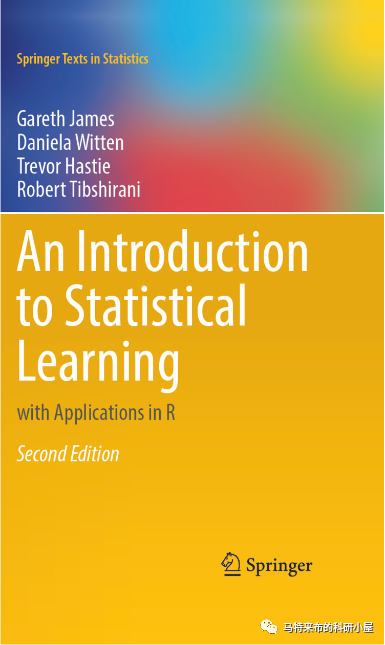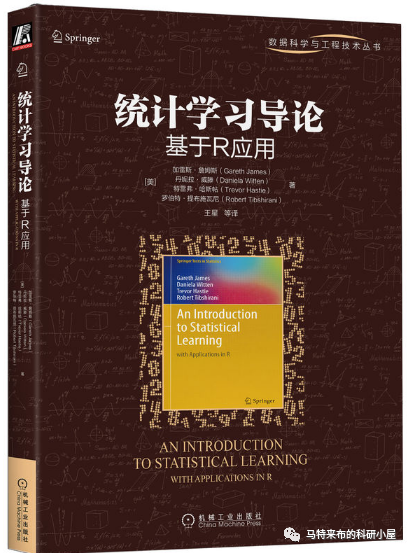《An Introduction to Statistical Learning with Applications in R》课后练习题答案。
《An Introduction to Statistical Learning with Applications in R》是一本应用广泛的统计学习教材,由斯坦福大学的教授Trevor Hastie、Robert Tibshirani以及Gareth James所著,全书旨在介绍现代统计学习的基本理论和方法,并通过R语言实现进行应用。
本书封面:

英文版

中文版
主要内容:
第一部分介绍了统计学习的概念和一些基本的统计学习方法,如监督学习、非监督学习、回归和分类问题。
第二部分讨论了基本的线性回归方法,包括简单线性回归、多元线性回归、逐步回归等,并介绍了模型选择和评估的方法。
第三部分介绍了分类方法,包括线性判别分析、k最近邻、逻辑回归、判别分析等,并介绍了问题的评估和选择。
第四部分讨论了一些基本的非线性方法,包括多项式回归、样条方法、非参数回归。
第五部分讨论了基于决策树的方法,包括分类和回归树、随机森林、提升方法。
第六部分介绍了支持向量机方法,并讨论了核技巧、多类别分类问题等。
第七部分介绍了聚类分析,包括k均值聚类、层次聚类等。
第八部分介绍了一些其他的方法,包括主成分分析、因子分析、正则化方法等。
让人头大的习题:
教材中每章都包含了大量的习题,涵盖了不同的难度级别和实际应用场景,若能够独立并认真完成这些习题,可以帮助读者深入理解和应用统计学习的基本理论和方法。
但在完成这些习题的过程中,同学们往往会遇到各种问题和困难,需要耐心思考和认真分析才能得到正确的答案。因此,我们准备了一份详细的课后习题解析,帮助读者更好地掌握本书的内容和提高习题的完成效率。
这份课后习题解析包括以下内容:
-
习题的具体答案和解析。
-
R语言代码的实现,方便读者直接运行和测试各种统计学习方法的效果。
部分预览:























 1万+
1万+

 被折叠的 条评论
为什么被折叠?
被折叠的 条评论
为什么被折叠?








